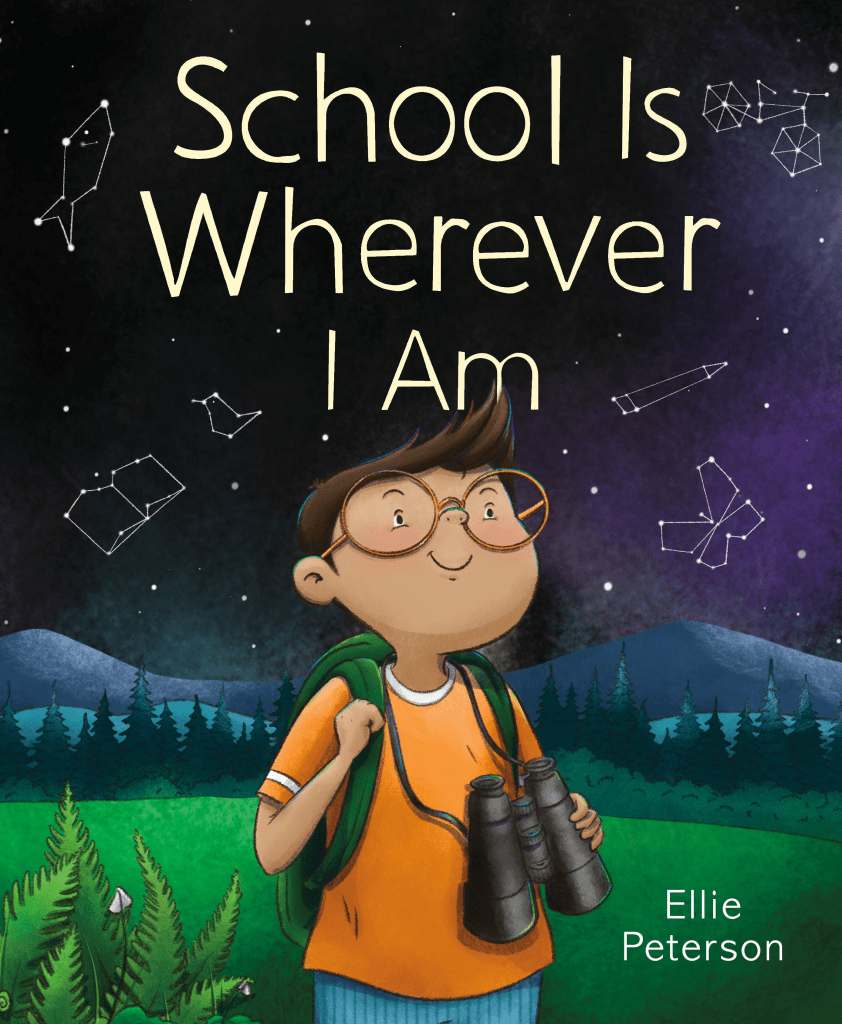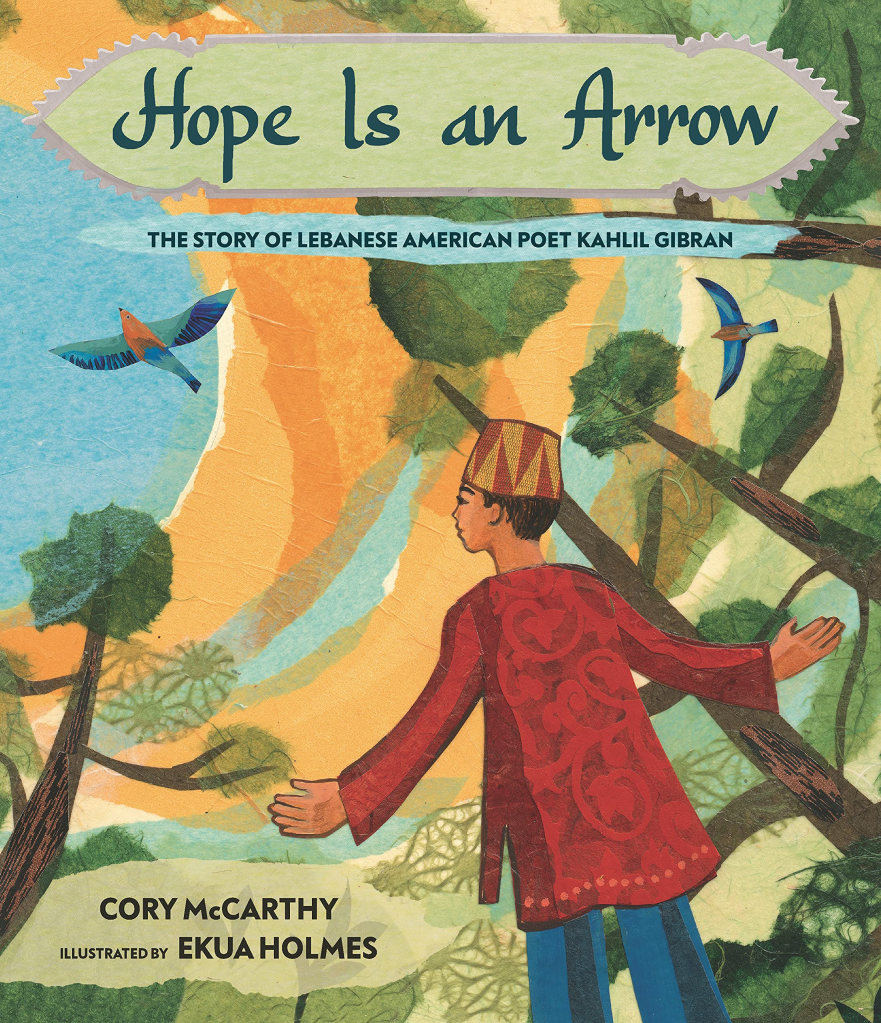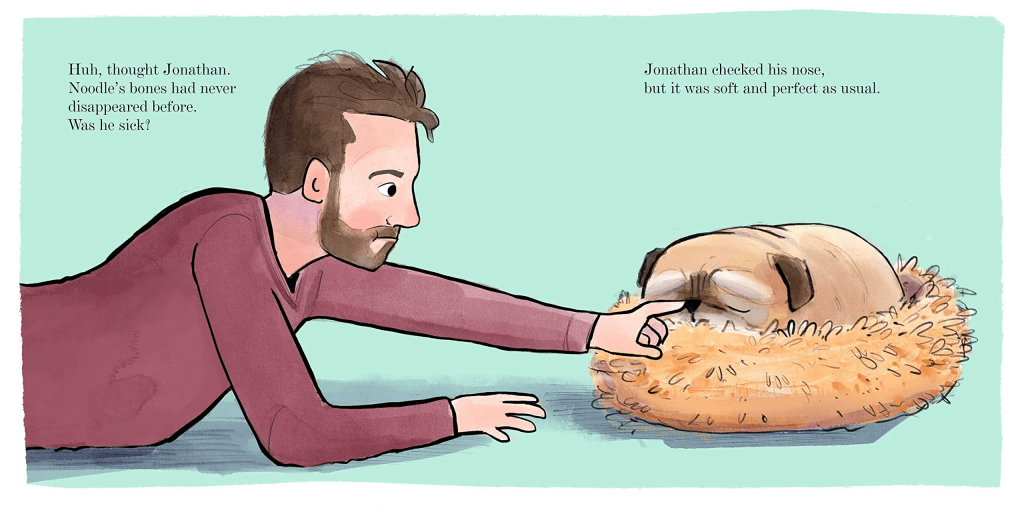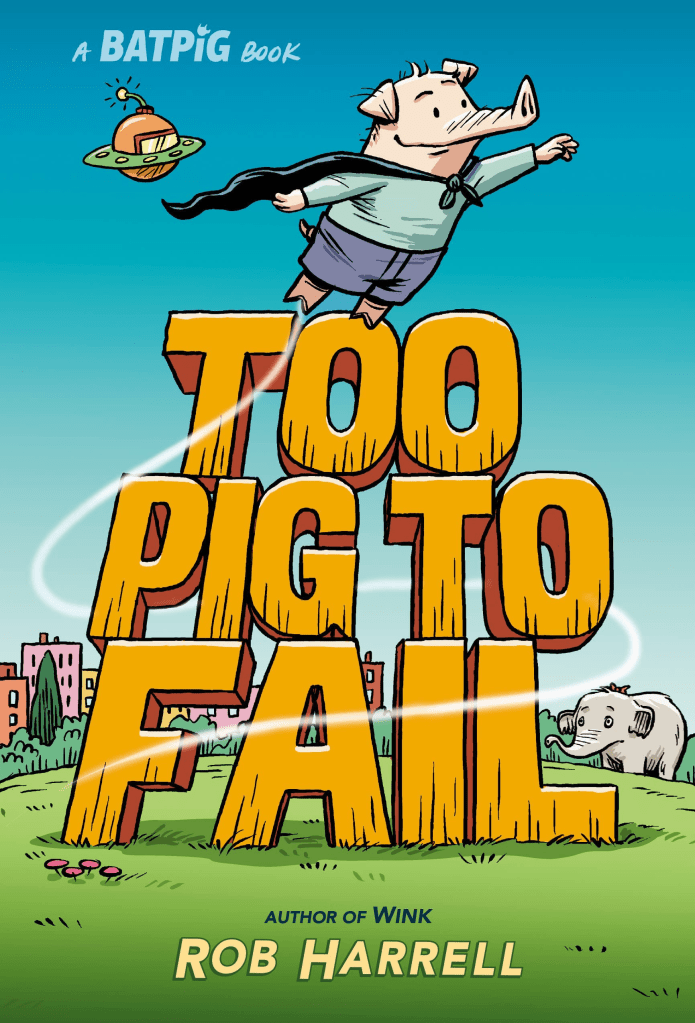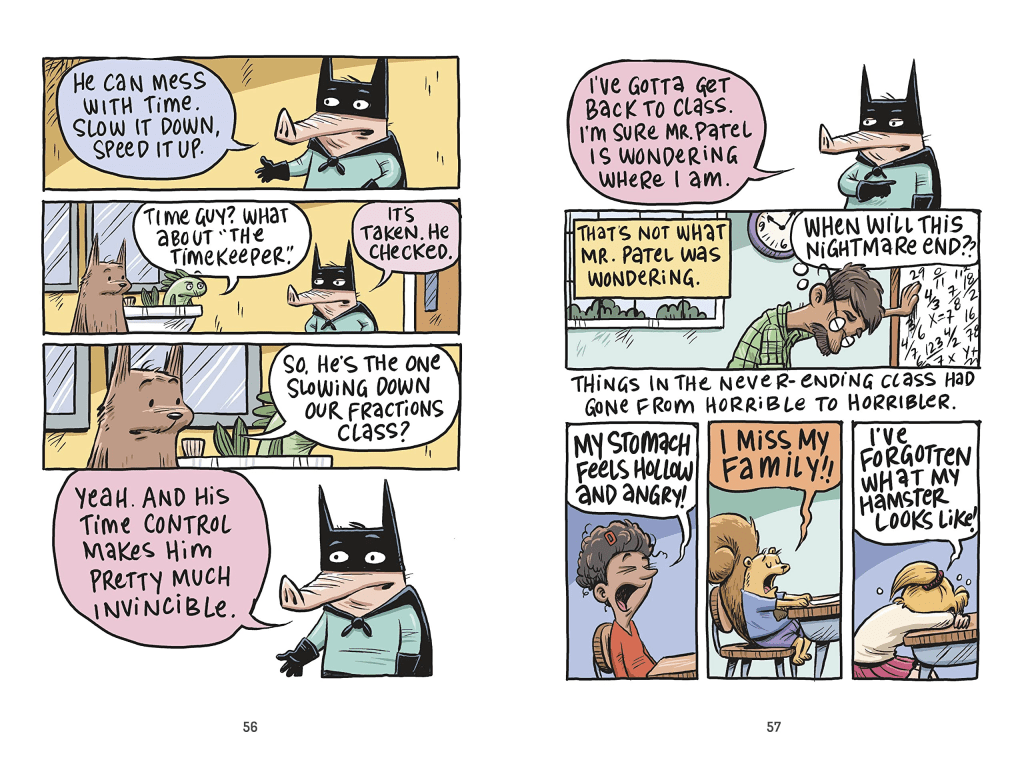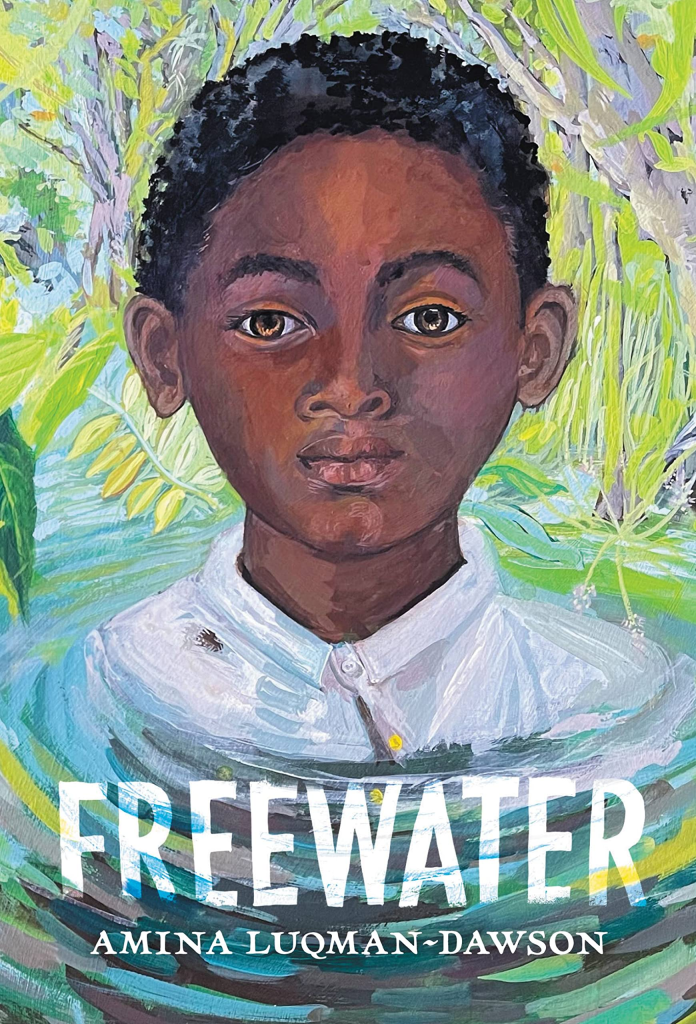Published by Roaring Brook Press
Summary: A boy introduces his school as a building where he goes to a classroom that has desks, a teacher, and his classmates. But then he wonders if school can be in other places too. He thinks about field trips to museums or a pumpkin patch, as well as experiences he’s had with his family like cooking and woodworking. Sometimes school is on a computer screen. School can even look like making a mistake, figuring out how to fix it, and apologizing. Inside or outside, the boy decides that school is wherever he is. 40 pages; ages 4-8.
Pros: A great back-to-school book that encourages curiosity, both in the traditional school setting and outside of it. Kids can brainstorm their ideas about school before reading this. I love the endpapers that show different sets of collections associated with places mentioned in the book.
Cons: Flashbacks to remote learning with the teacher on the computer screen.
